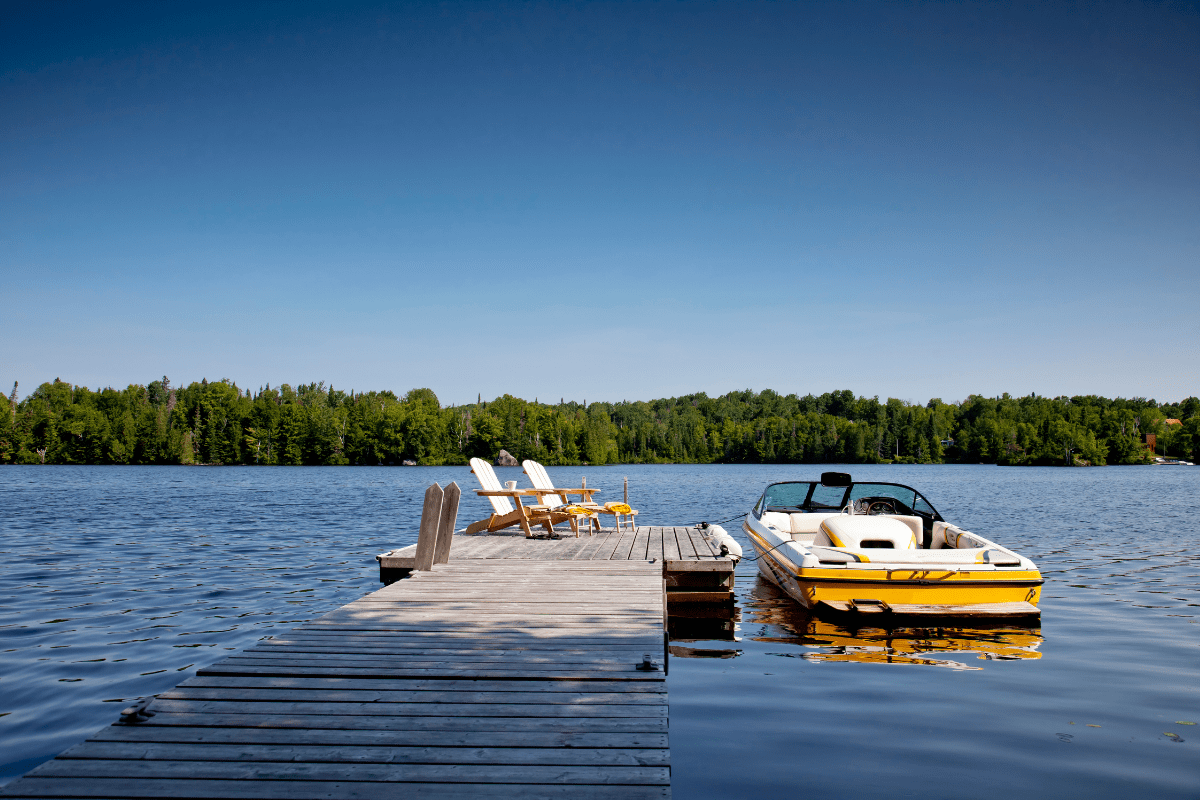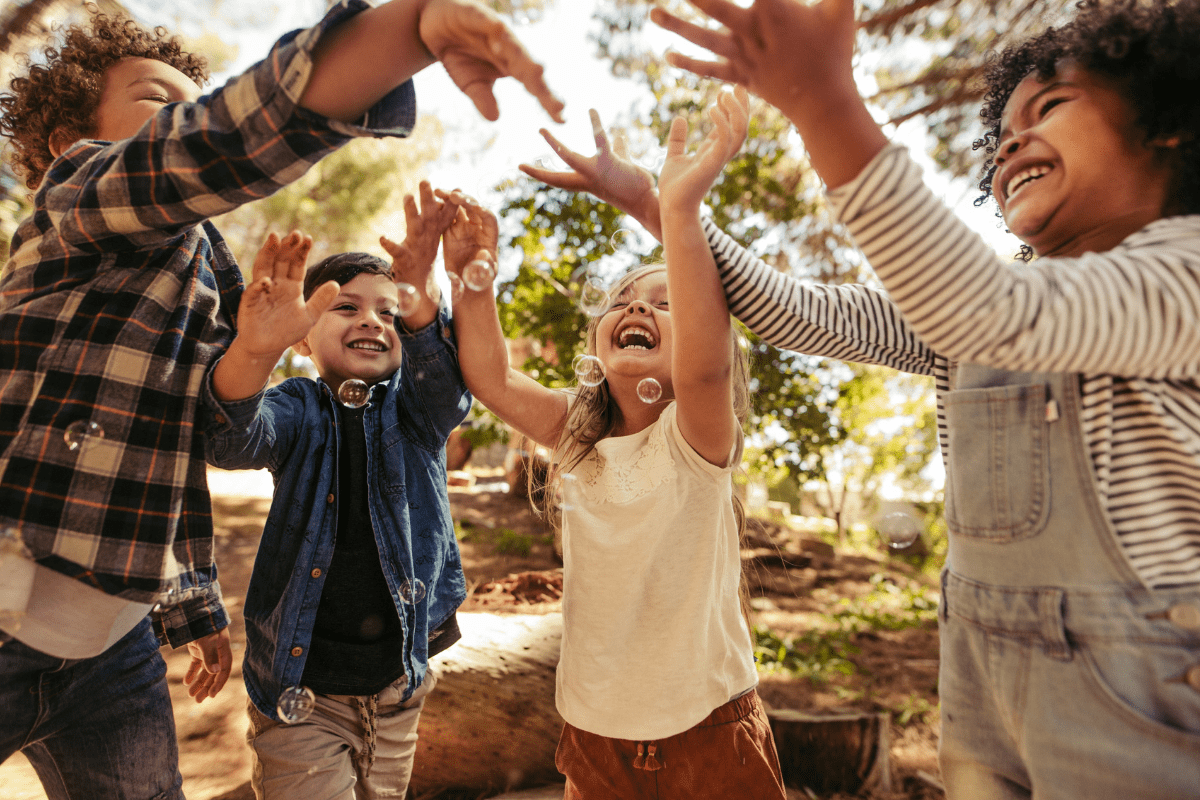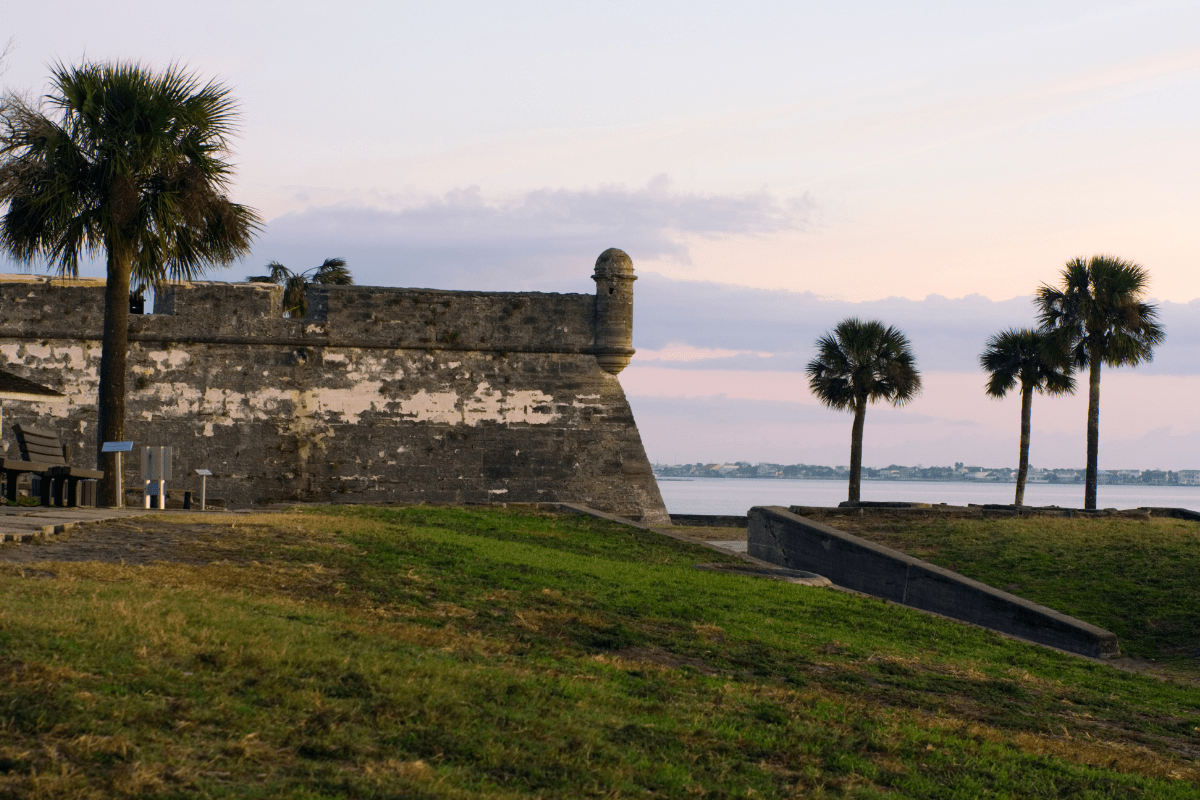Florida might be famous for its beaches, but with over 30,000 lakes sprawling across 3 million acres, the state's freshwater scene deserves some serious love. Whether you're chasing trophy bass, looking for a peaceful paddle through ancient cypress swamps, or just want to find a gator-free swimming spot (spoiler alert: they're rare), this guide covers everything you need to know about Florida's incredible lake system.
The big players everyone talks about
Before we dive into the hidden gems and practical stuff, let's address the elephant in the room… or should I say, the alligator in the lake? Florida's major lakes are famous for good reasons, and while they can get crowded, they're absolutely worth experiencing at least once.
Lake Okeechobee: The undisputed heavyweight champion
You can't talk about Florida lakes without mentioning "The Big O." At 450,000 acres spanning five counties, Lake Okeechobee is so massive it has its own weather patterns. Despite being the seventh-largest freshwater lake in the United States, it averages only 9 feet deep, which honestly makes you wonder how all those bass tournaments don't turn into bumper boat competitions.
The lake earned its "Bass Capital of the World" title fair and square, hosting thousands of anglers annually who come for the professional tournaments. If fishing isn't your thing (and that's totally fine), the 110-mile Lake Okeechobee Scenic Trail offers spectacular views without requiring you to touch a single worm. Time your visit for the annual Big O Hike in November or the Speckled Perch Festival in March, when the lake transforms into a carnival of outdoor enthusiasts and fried fish stands.
The Herbert Hoover Dike, built in 1928, creates this weird but wonderful landscape where you're essentially fishing or hiking on top of a massive earthen wall. It's part of the critical Everglades ecosystem, which means you're not just catching fish… you're participating in one of America's most important watersheds. No pressure or anything.
Lake Kissimmee: Where Old Florida still exists
Located 70 miles south of Orlando, Lake Kissimmee sprawls across 35,000 acres and feels like stepping back in time, minus the yellow fever and lack of air conditioning. The state park protects 5,930 acres and hosts over 200 bird species, including 50+ that are threatened or endangered. That's basically a real-life Pokemon collection, except these creatures actually exist and some of them might steal your sandwich.
The park's 1876 Cow Hunters Camp deserves special mention. From October through May, weekend visitors can experience living history programs that demonstrate Florida's cattle ranching heritage. Yes, Florida had cowboys before it had mouse ears, and they were called "cow hunters" because apparently regular cowboy names weren't humid enough.
With 13+ miles of hiking trails and over 60 campsites, Lake Kissimmee offers everything from primitive camping to full RV hookups. The connected waterways total more than 30,000 acres, meaning you could paddle for days without seeing the same cypress tree twice. Just remember that those logs floating nearby might have eyes and teeth.
Lake George: The identity crisis lake
Florida's second-largest freshwater lake at 46,000 acres can't quite decide what it wants to be. The brackish water supports both freshwater and saltwater species, making it the only place in the world where you can catch blue crabs in a freshwater lake. It's like the lake equivalent of a turducken, except with fish.
Located within the Ocala National Forest, Lake George also holds the dubious honor of having Florida's highest concentration of alligators. We're talking about a gator density that would make even Florida Man think twice about taking a swim. The western shore's location within the national forest provides extensive recreational opportunities, from primitive camping to horseback riding, assuming your horse is brave enough.
The fishing here is absolutely bonkers. Where else can you catch largemouth bass, Atlantic stingrays, and blue crabs on the same trip? It's like nature's grab bag of "things that probably shouldn't live together but somehow do."
Hidden gems that locals gatekeep
Now let's talk about the lakes that Floridians pretend don't exist when tourists ask for recommendations. These spots offer incredible experiences without the crowds, though I'm probably breaking some unwritten Florida code by sharing them.
Kenansville Lake: Jurassic Park for anglers
This 2,500-acre lake in Osceola County earned its "Jurassic Park" nickname not because of dinosaurs (thank goodness), but because of its prehistoric-sized bass. Created from former cattle pasture in 1993, this shallow impoundment operates under strict no-harvest regulations, meaning every bass must be released.
The result? Skilled anglers regularly report catching 100+ bass per trip. That's not a typo. The shallow 3-5 foot depth with old fence lines and grass beds creates perfect habitat, and some bluegill here exceed one pound, which is basically the bluegill equivalent of The Rock.
The single concrete boat ramp and rural setting keep the crowds minimal, though word is slowly getting out. Visit soon before Instagram ruins it like it ruins everything else we love.
Lake Norris: The paddle-only paradise
Hidden in Lake County, Lake Norris Conservation Area offers something increasingly rare in Florida: actual solitude. This 1,100-acre darkwater lake requires paddling up Blackwater Creek for about a mile through ancient cypress forest just to reach it. It's like nature's way of saying "you must be this dedicated to enter."
The payoff is worth every paddle stroke. The lake features stunning dwarf cypress trees that look like a bonsai forest had a baby with the Everglades. Over 100 active osprey nests make this one of Central Florida's highest concentrations, and in fall, the golden cypress foliage creates scenes that'll make your Instagram followers accuse you of using filters when you haven't.
Here's the kicker: Lake County Water Authority offers free canoe rentals for this area. Free. In Florida. That's rarer than a parking spot at Disney World during spring break.
Cedar Lakes Woods and Gardens: Nature's art gallery
Two hours from Tampa near the small town of Williston, this former limerock quarry transformed into a 20-acre botanical wonderland that includes, wait for it… actual waterfalls. In Florida. Where the highest natural point is 345 feet and most of us get altitude sickness on highway overpasses.
The $12 admission supports conservation efforts and gets you access to artistic botanical displays, rescued tortoises, and huge koi ponds. It's like someone decided to build what Florida would look like if Florida had mountains and seasons and stuff. Recently discovered by social media influencers (ugh), but still relatively peaceful on weekdays.
What it actually costs to lake it up in Florida
Let's talk money, because nothing ruins a perfect lake day faster than discovering you need a second mortgage to launch your kayak.
Florida State Parks offer the best deal with annual passes at $60 for individuals or $120 for families covering up to eight people. Daily entrance runs $2-8 per vehicle, with boat launching adding another $4. Seniors get 25% off annual passes, and veterans with 100% disability receive free passes, which is the least we can do for people who've served.
Fishing licenses will set you back $17 annually for residents or $47 for non-residents. Three-day passes cost $17, perfect for vacation fishing without the commitment issues. Kids under 16 and Florida residents over 65 fish free, because apparently wisdom comes with perks.
The Gold Sportsman License at $100 covers hunting, fishing, and all permits, basically making you legally allowed to wrestle alligators (please don't wrestle alligators). The state offers license-free fishing the first weekend in April and second weekend in June, which is when every pier and shore spot becomes a human sardine can.
If you're bringing a boat, registration fees range from $5.50 to $189.75 based on vessel length. Anyone born after January 1, 1988, needs boater education certification to operate vessels over 10 horsepower, because apparently that's when people forgot how to not crash into things.
Activities beyond just staring at water
Florida lakes offer more activities than a cruise ship director on espresso. Here's what you can actually do besides taking selfies with suspicious logs in the background.
Fishing: The state religion
The holy trinity of Florida bass fishing consists of Okeechobee, Kissimmee, and Tohopekaliga, where tournament fishing draws anglers from around the world. Polk County alone maintains 115+ boat ramps, which is probably more than some states have lakes.
Common catches include:
- Largemouth bass (the star)
- Bluegill (the reliable friend)
- Black crappie (the tasty one)
- Catfish (the bottom feeder)
- Chain pickerel (the toothy surprise)
Lake George's brackish water adds blue crabs and Atlantic stingrays to the mix, because why should fishing make sense?
Wildlife watching: Free entertainment
Florida's lakes host 500+ bird species, making them nature's own Netflix. Lake Apopka's North Shore alone has documented 281 species, while some coastal areas record over 350. Peak viewing happens March through May during breeding season, when birds dress up fancy and act ridiculous, kind of like Floridians during bike week.
Watch for bald eagles, wood storks, roseate spoonbills, and the Florida scrub-jay, the state's only endemic bird that apparently looked at all of Florida and said "yeah, this seems normal." Sandhill cranes sound like dinosaurs and act like tourists, wandering onto golf courses and blocking traffic.
Water sports: How to look cool while falling
Winter Haven calls itself the "Water Ski Capital of the World" with 24 interconnected lakes and more Water Ski Hall of Fame members than any other city. The Harris Chain offers 75,000 acres across eight lakes with 30+ public boat ramps, perfect for every water sport invented and some that probably shouldn't have been.
Popular activities range from waterskiing and wakeboarding to the more sedate paddleboarding and kayaking. Jet skiing remains popular despite being the motorcycle of the water world… loud, obnoxious, and irresistibly fun.
Safety stuff that might save your life
Let's address the toothy elephant in the room. Florida lakes have alligators. Lots of them. Lake Jesup leads with 2,414 counted gators during the 2024 census, though estimates suggest up to 13,000 total. That's basically a gator city with its own zip code.
Here's your survival guide:
- Swim only in designated areas
- Stay out of water at dawn/dusk
- Keep pets leashed and away from edges
- Don't feed gators (it's a felony)
- If something looks like a log, it's probably not
- That splash you heard? Definitely not a fish
- Emergency hotline: 866-392-4286
Water quality presents another concern. Florida monitors 13,500+ stations statewide, tracking harmful algal blooms that peak in summer and fall. Recent alerts included Lakes Rowena, Howell, Thonotosassa, and Mabel. Spring-fed lakes like Blue Cypress maintain better clarity year-round, with constant temperatures between 68-85°F.
Best visiting times run March through April, when temperatures stay comfortable and humidity hasn't yet reached "breathing through soup" levels. Water temperatures range from 61-72°F in winter to 78-86°F in summer, with some lakes hitting 97°F in July, which is basically hot tub temperature minus the jets.
First-timer mistakes to avoid
After watching countless tourists make the same errors, here's what not to do:
Forgetting licenses leads to expensive fines that'll ruin your vacation budget faster than a Disney ticket. Attempting drone flights in state parks will get you kicked out, since they're completely banned except for rare commercial permits. Feeding wildlife might seem cute until you realize you've created a monster that associates humans with food.
Swimming outside designated areas isn't just dangerous… it's often illegal. Many conservation areas prohibit swimming entirely, and for good reason. Those "no swimming" signs aren't suggestions, they're survival tips.
Underestimating Florida's weather is classic tourist behavior. Afternoon thunderstorms from May through October arrive like clockwork, usually between 2-4 PM. Hurricane season runs June through November, peaking around September 10th. Check forecasts obsessively, because Florida weather changes faster than a teenager's mood.
Pack like you're going to the surface of the sun. Sunscreen, water, more water, backup water, and did I mention water? Heat exhaustion sneaks up on you faster than a speed trap in Waldo.
Making it happen: Your lake adventure checklist
Ready to explore? Start with the Florida State Parks website for park information and Reserve America for camping reservations. Book early, especially for popular spots during peak season. Florida residents can make same-day reservations before 1 PM, while non-residents can book up to 10 months ahead.
Essential gear includes:
- Fishing license (if applicable)
- Life jackets (Coast Guard approved)
- Sunscreen (SPF 50+)
- Insect repellent (the nuclear option)
- Water (seriously, so much water)
- First aid kit
- Weather radio or app
Check water quality reports before swimming, especially during summer. The FWC provides excellent fishing forecasts for major lakes, updated regularly with catch reports and conditions.
The bottom line on Florida's lakes
Florida's lake system offers incredible diversity, from the massive expanse of Okeechobee to hidden gems like Lake Norris that require dedication just to reach. With proper planning and respect for wildlife (especially the bitey kind), these freshwater treasures provide endless adventures at surprisingly affordable prices.
Whether you're chasing trophy bass, paddling through ancient cypress swamps, or just looking for a beach alternative that doesn't involve sand in uncomfortable places, Florida's lakes deliver. They're weird, wonderful, occasionally dangerous, and absolutely worth exploring. Just remember: if it looks like a log but has eyes, paddle the other direction. Fast.
The state's 30,000+ lakes aren't just bodies of water… they're economic engines supporting 2.1 million jobs and contributing billions to local communities. By visiting responsibly and supporting conservation efforts, we ensure these natural treasures remain accessible for future generations of adventurers, anglers, and people who just really like looking at birds.
Now get out there and explore. The gators are waiting. I mean, the lakes are waiting. Actually, both are true, so maybe start with the springs.





